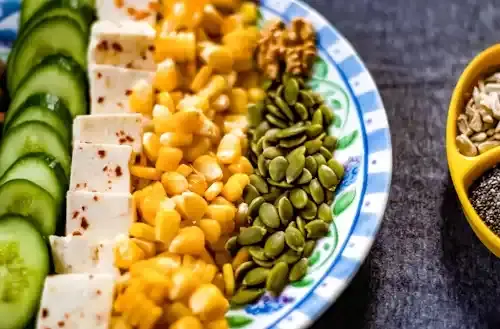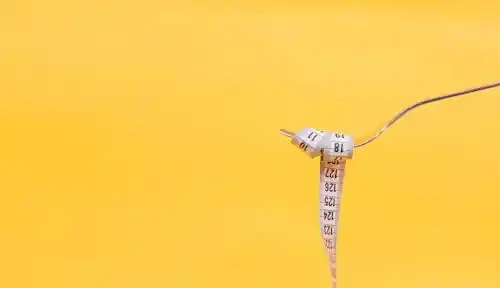The Ultimate Guide to Losing Fat and Gaining Muscle at the Same Time
In their quest to build a strong and healthy body, fitness enthusiasts often focus on losing fat or gaining muscle. But is it possible to work on both goals at the same time? Many trainers and fitness experts will tell you that losing body fat and gaining muscle at the same time is possible – but you need to understand how to do it and be willing to do what it takes to reach that goal. Let's take a closer look at how to lose fat and gain muscle at the same time.
Show key points
- Losing fat and gaining muscle simultaneously is possible, but it requires a precise balance of exercise, diet, and understanding of body composition.
- Fat and muscle are fundamentally different substances, meaning they cannot directly convert into each other and need different strategies for development or reduction.
- Achieving fat loss requires a calorie deficit, while muscle gain demands a calorie surplus, presenting an inherent challenge in pursuing both goals at the same time.
- ADVERTISEMENT
- The concept of calorie splitting explains the uncertainty in whether consumed or burned calories come from fat or muscle, influenced partly by genetics and hormones.
- Beginners with high body fat and no strength training experience are in the best position to gain muscle while losing fat due to favorable hormonal responses and energy availability.
- For individuals with lower body fat or training experience, it’s often more effective to focus on one goal—usually fat loss—before shifting the focus to muscle gain.
- A safe and sustainable approach to body recomposition includes regular strength training, sufficient protein intake, and avoiding extreme dieting methods.
What is fat loss and muscle gain?

Basically, losing fat and gaining muscle at the same time means "strengthening muscles." Refers to body shaping and slimming. It would be different if the human body was made up of only one consistent substance, but it is not. Our bodies are made up of different types of substances with different densities. Getting a body shape involves losing fat and gaining muscle. But muscle and fat are two completely different materials, and working with each requires a different approach. In other words, we can't replace fat with muscle or replace muscle with fat. Your body composition is the ratio of fat mass to lean body mass. Fat mass is as it looks – body fat. But lean mass includes muscles, bones, tendons, ligaments, organs, etc. At first glance, the methods needed to achieve fat loss and muscle gain goals seem to contradict each other. Fat loss requires burning more calories than you consume. But to build muscle, you need to consume more calories than you burn. To burn fat, you need to make sure that your body is deficient in calories. That means eating fewer calories than you burn each day. Impotence means that your body must take advantage of pre-existing fat to get the energy needed for movement or exercise. On the flip side, your body needs to increase calories to gain muscle. Excess means that your body has excess calories to rely on for energy, so any stored fat in your body remains unchanged.
Recommend
What does energy have to do with fat loss and muscle gain?

When working on fat loss and muscle gain simultaneously, it is essential to think about where calories go. When we burn calories by expelling energy from the body, does our body pull out of muscle or fat tissue? The short answer is: we don't know! When we reduce our calorie intake, we can't control whether our bodies turn into fat or muscle for energy. It would be great if all the calories we consume nourished our muscle tissue and none of them nourished body fat, right? The uncertainty about where our calories will go is called calorie splitting.
What is calorie splitting?

The breakdown of calories depends on how much protein our body gains or loses when overeating or undereating. Most of the time, we can't control the P ratio because it tends to be hereditary. But physiologist Liel McDonald explains that we control about 15 percent to 20 percent of it, depending on the way we eat our diet and what we do when we exercise. Hormones are one of the main determinants when it comes to our P ratios. High testosterone levels lead to more fat reduction than muscle. Chronically high levels of cortisol reduce muscle more than fat. However, it is still difficult to predict the proportion of energy that goes towards muscle formation versus fat cells when we have an excess of calories. If you do enough strength training, consume enough protein, drink enough water, etc., your body could theoretically use stored fat to build muscle tissue.
How to easily lose weight and gain muscle at the same time?

The people with the best chance of losing fat and gaining muscle at the same time fall into two different groups based on how long they have been in strength training, the current ratio of fat mass to lean mass, hormone levels, and genetics. Find out which group you belong to to learn how to lose weight and gain muscle at the same time.
People with high body fat content and no training experience

If you've never done strength training before, it's easier to gain muscle. Those with a higher percentage of body fat will have more energy to spare and gain muscle. Higher body fat content also means that your body is likely to be more resistant to insulin, a condition in which fat cells resist eating more calories, thus diverting energy towards muscles. Strength training helps muscles grow quickly, which improves insulin sensitivity and the ability of muscle cells to absorb nutrients. When these two factors are present, it's the perfect combination of fat loss and muscle gain at the same time.
What about everyone?

Fat loss and muscle gain is more difficult for very thin people who have muscles, but it is still possible. It requires an exercise program and a diet that maintains the right amount of calories in exchange for spending. The best way to deal with this issue is to address one goal at a time. Fat loss and muscle gain can be subsequent goals rather than simultaneous goals. Many people have found it more effective to focus on losing body fat first and then work on smoothing and gaining muscle. You need to eat a healthy diet and do cardiovascular exercise to reach the calorie deficit that allows fat loss. Vulgar diets are never good because they are often aimed at shedding extra pounds too quickly. This is not safe or healthy, and it is difficult to maintain these diets over time. Cut back on your calories and do cardio exercises that keep your heart rate high, and you will start to shed some of your body fat. Once you get rid of some of the fat, you can start the muscle-building process. This involves strength training and dietary changes. You want to add protein to your diet – and plenty of it. Protein helps your body convert fat into muscle. When you do strength training, you push your muscles to the point where they begin to tear and collapse. In between workouts, protein helps your body repair and build muscle again.








